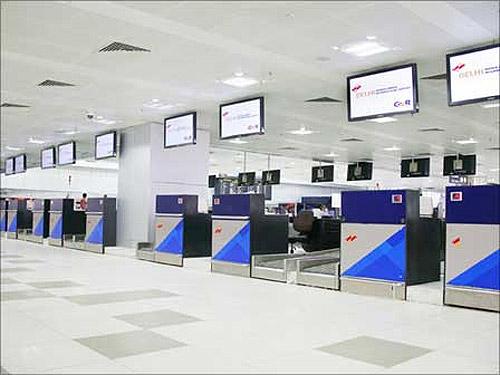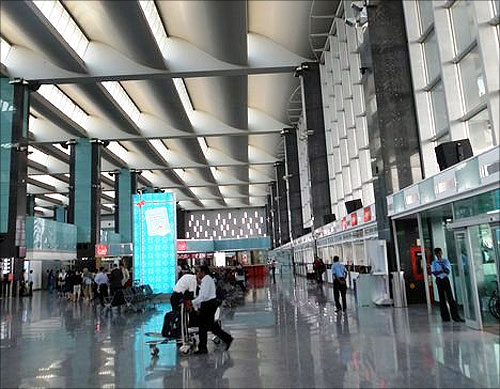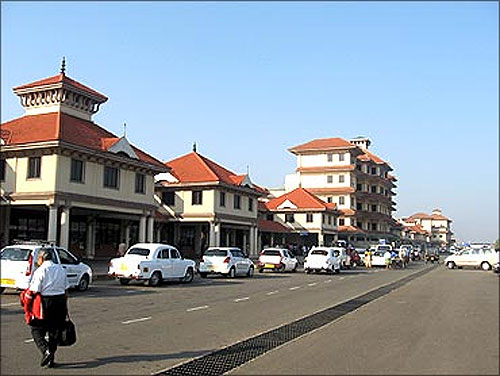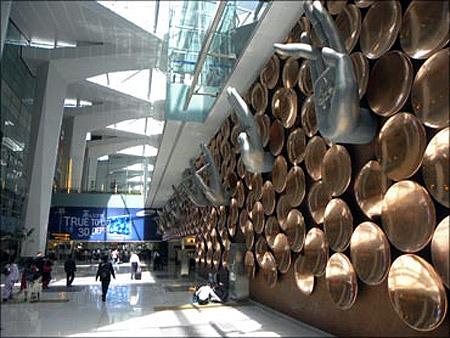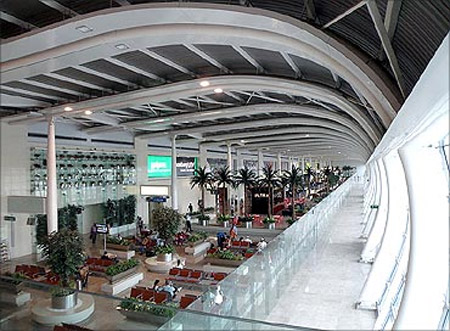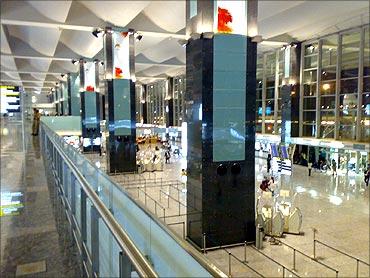 | « Back to article | Print this article |
Why is Delhi Airport losing money
Attention this past week has been focused, among other things, on the Delhi airport project, with the Comptroller and Auditor General (CAG) pointing to favours done for the airport company.
Buried in the pages of the CAG report is a little nugget, relating to two earlier joint venture airports, at Hyderabad and Bangalore.
While the competitive bidding was such that Delhi airport pays 46 per cent of its total revenue to the Airports Authority of India (AAI), Mumbai airport went to the company that bid 38.7 per cent revenue share for AAI.
But here's the thing - the Bangalore and Hyderabad contracts were handed out for revenue share of as little as four per cent in each case.
Click NEXT to read more...
Why is Delhi Airport losing money
The CAG has given the government some well-deserved stick for levying a development fee on passengers using Delhi airport - something not on the cards when companies bid for the contract.
Well, guess what? Both Bangalore and Hyderabad charge development fees too - and, for domestic passengers, they charge more than Delhi.
For international passengers (the smaller component of business at these southern hubs), the charge is slightly less than in the case of Delhi.
Click NEXT to read more...
Why is Delhi Airport losing money
The results show in the profit numbers: 18 per cent of revenue in Mumbai, and 30 per cent in Bangalore (which bests the tech companies in that city).
In fact, Bangalore's Ebitda (earnings before interest, tax, depreciation and amortisation) is a handsome 65 per cent of revenue, so no one can argue that Bangalore cannot afford to pay a larger revenue share, or do without the passenger user fee.
Since the revenue share issue cannot be reopened, the question to be asked concerns the (extent of the) passenger user charge.
It might be argued that the Bangalore and Hyderabad airport projects were early-bird exercises, and no one knew how the economics would work out. But that wouldn't strictly be true.
Click NEXT to read more...
Why is Delhi Airport losing money
The Cochin International Airport pre-dated both by many years, and has been profitable from its third year of operation.
The international experience too should have shown that airports are good businesses.
The other argument against loading airports with heavy financial burdens would be that high revenue-share numbers make airports unviab#8804 indeed, Delhi airport has been losing money for the past six years because of the heavy interest burden on loans.
Click NEXT to read more...
Why is Delhi Airport losing money
To become viable, airports then get forced to levy high aircraft charges, which is the complaint that airlines have made about Delhi.
But the New Delhi airport tariffs for landing and parking are low or middle-of-the-road when compared to airports elsewhere for short- and medium-haul flights, and high only for ultra-long distance flights which account for a small share of the total traffic.
At these new aircraft rates, Delhi is eminently viable.
Indeed, since the airport regulator will fix tariffs to deliver a 16 per cent return on equity, the expectation is that Delhi airport charges will come down in the future (once the loans that financed the airport have been repaid). In other words, viability is not affected by even 46 per cent revenue share.
Click NEXT to read more...
Why is Delhi Airport losing money
Finally, it might be argued that India should not be taxing its aviation sect#8744 rather, the effort should be to promote its growth.
Fair enough, but the revenue that is shared with AAI is used to finance airport development across the country; the revenue shared by the two metro airports has paid for close to half the investment that AAI has made in refurbishing smaller airports in the past five years.
Click NEXT to read more...
Why is Delhi Airport losing money
Rather, it is to point out that, as in so many other infrastructure projects, a proper balance between private sector incentive and state revenue needs has not been worked out.
